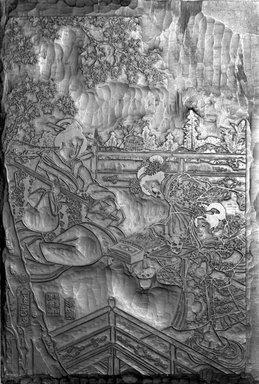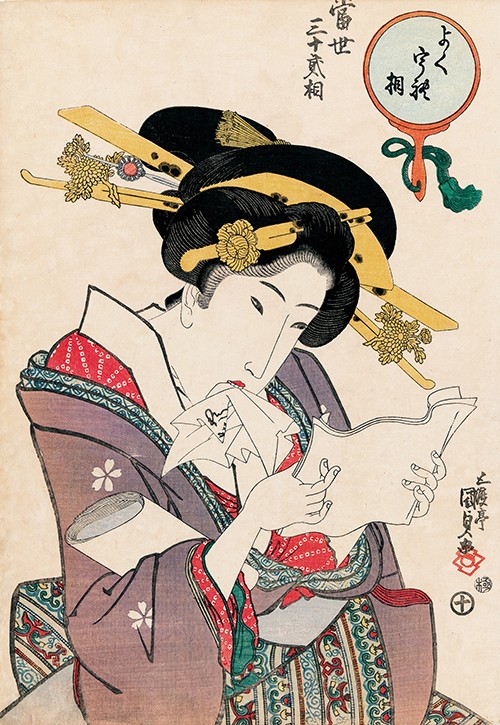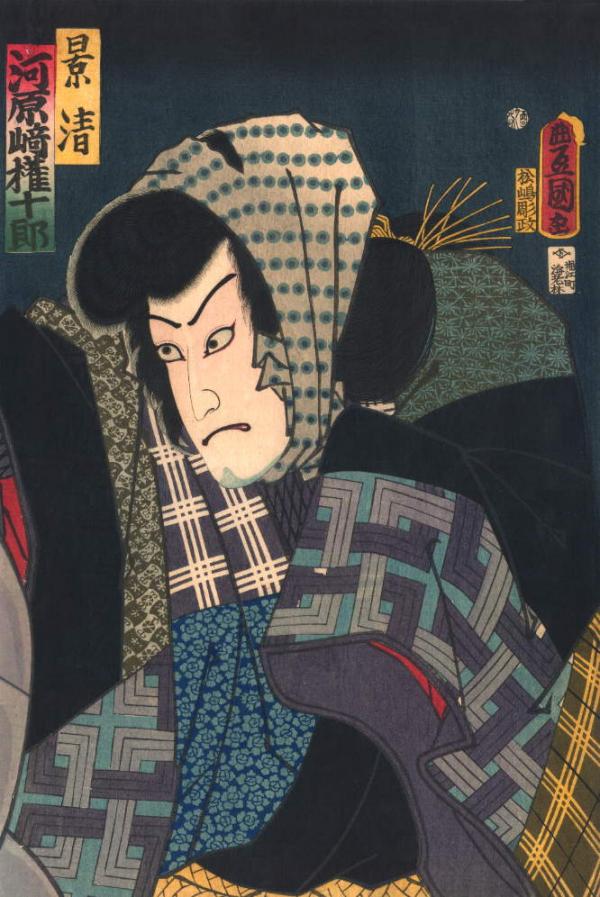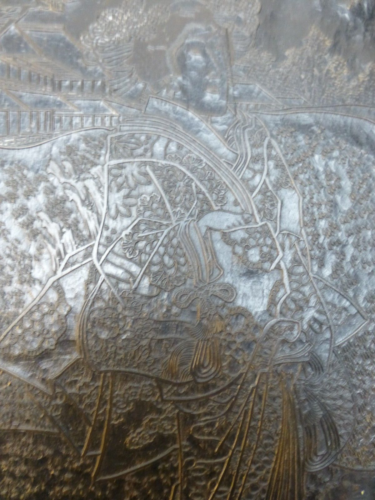和刻版 之 三代歌川豊国的浮世绘
2024-1-3
在纽约布鲁克林博物馆里,有一块江户时代(Edo period,1615–1868)日本浮世绘画家歌川国貞(Utagawa Kunisada)也就是(a.k.a. Utagawa Toyokuni III)三代歌川豊国(Japanese, 1786–1865)的雕刻木版:
Utagawa Kunisada (Toyokuni III) (side a) (Japanese, 1786-1865). Double-sided Key Block for Ukiyo-e Print, ca. 1830. Side a: Toyokuni III (Kunisada) Three Women Musicians On a Balcony. A woodblock for ukiyo-e print of an autumn scene of women playing shamisen and biwa (musical instruments) with an attendant who carries tray with tea cup. Condition: Very good. Wood is stained black from ink used in printing.Brooklyn Museum。 |
Side b: Keisai 18 Tokyo cuisine style dishes. (Tokyo ryori jyuuhachi sakana) Name of place: Sumiyoshi cho… (incomplete) The other name of place: Honya bakuro (bakuro) four Carver's name: Cho-ei Keyblock for outline of ukiyo-e print showing two women in a restaurant, holding papers in their hands. Condition: Few tiny breaks in outline. Old break (stable) at upper left. Cherry wood, 15 1/2 x 10 1/8 x 3/8 in. (39.4 x 25.7 x 1 cm). |
This carving served as the key block, the first one made by the carver, based on Kunisada’s original drawing. It provides the basic outlines of the design. The key block was used to make a number of simple black impressions that served as guides for the carving of all subsequent blocks. The print made by this carving was the mirror image of what we see here, so all of the text on the block is in reverse. This block is actually signed by its carver, Asai Ginjirō (1844–1894). There was no general policy with regard to carvers signing their work, but such signatures are definitely in the minority.
想当年这样的雕刻木版也看到过一块,是另外一個浮世繪大師葛飾北齋最著名的神奈川衝浪裏,屬於經典當中的經典,被加工成了一个盒子,完整保存了下來,但被一个喜欢雕版印刷的朋友以五百块钱的价格给顺走了,不无遗憾。
|
|
| |
歌川国贞(Utagawa Kunisada),又名三代歌川豊国(Utagawa Toyokuni III),1786年生于江户(现东京),是日本江户时期浮世绘画家、版画家。其最早的知名作品创作于1807年,大概1808年开始创作读本插画。他师承歌川丰国,以画色情画闻名,画中女人多颓废好色、忧郁疲惫。其画风自成一格,号称歌川派,是日本浮世绘派别影响力最大的一派。其生前名声远超同时代的葛饰北斋、歌川广重和歌川国芳。国贞最出名的画号为五渡亭、香蝶楼、一阳斋。1865年1月12日,他在江户去世,享年约80岁。
下面这一块,是日本版《红楼梦》插图中的单面雕,尤氏别馆花盛图,可遇而不可求,比较少见:
|
|
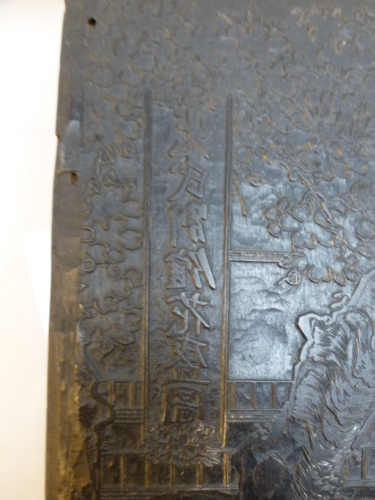 | 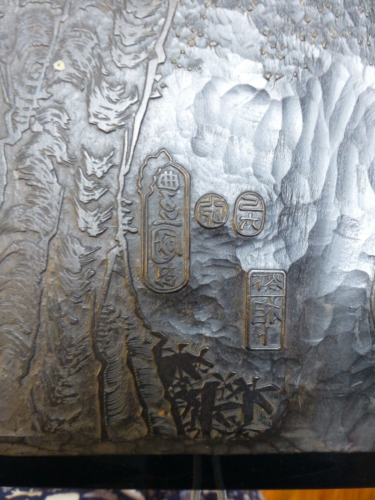 |
粗略的估计,17世纪之后存世的日本雕版全世界约有二十万片,包括浮世绘版画和佛教经典,收全了既不可能,也没必要。
It is my estimate that currently there are some 200,000 surviving Japanese printing blocks, including color blocks,dating from the seventeenth to mid-twentieth centuries and housed in collections throughout the world. Yet, this represents only a fraction of the printing blocks that were produced during this period. Once printing blocks were produced, the final product—in this case the printed book—came into existence. And ultimately, it is much easier to examine extant books than search for printing blocks, many of which have not survived.
参考文献:

